-
 Bitcoin
Bitcoin $105,494.8913
-0.47% -
 Ethereum
Ethereum $2,536.4217
-1.40% -
 Tether USDt
Tether USDt $1.0004
-0.01% -
 XRP
XRP $2.1454
-0.01% -
 BNB
BNB $646.4114
-1.24% -
 Solana
Solana $145.3845
-2.17% -
 USDC
USDC $0.9999
0.00% -
 Dogecoin
Dogecoin $0.1784
-0.97% -
 TRON
TRON $0.2706
0.26% -
 Cardano
Cardano $0.6262
-2.37% -
 Hyperliquid
Hyperliquid $40.2782
-4.49% -
 Sui
Sui $2.9638
-3.24% -
 Chainlink
Chainlink $13.2126
-1.58% -
 Bitcoin Cash
Bitcoin Cash $433.3696
-3.44% -
 UNUS SED LEO
UNUS SED LEO $9.1040
1.08% -
 Stellar
Stellar $0.2567
-1.45% -
 Avalanche
Avalanche $18.9764
-2.05% -
 Toncoin
Toncoin $2.9578
-2.28% -
 Shiba Inu
Shiba Inu $0.0...01205
-0.42% -
 Hedera
Hedera $0.1547
-2.62% -
 Litecoin
Litecoin $85.3396
-0.96% -
 Polkadot
Polkadot $3.7914
-1.26% -
 Ethena USDe
Ethena USDe $1.0003
-0.01% -
 Monero
Monero $312.3308
1.34% -
 Dai
Dai $0.9999
-0.01% -
 Bitget Token
Bitget Token $4.5283
-0.35% -
 Uniswap
Uniswap $7.4176
-2.51% -
 Pepe
Pepe $0.0...01099
-2.59% -
 Pi
Pi $0.6177
6.25% -
 Aave
Aave $276.0751
-3.58%
What is the difference between the silver valley and the golden valley of the moving average system? How to evaluate the success rate of the pattern?
The silver valley and golden valley patterns are bullish moving average setups that signal potential uptrends in crypto trading, with the golden valley being a stronger and more reliable indicator due to broader market consensus across timeframes.
Jun 14, 2025 at 03:14 pm

Understanding the Moving Average System in Cryptocurrency Trading
The moving average system is a cornerstone of technical analysis used by traders to identify trends and potential reversal points in asset prices. In cryptocurrency trading, where volatility is high and price movements can be erratic, moving averages provide a smoothed representation of price data over a specific time period. These tools help filter out noise and offer clearer signals for decision-making.
One popular application of moving averages involves identifying patterns such as the silver valley and the golden valley. These terms refer to specific configurations formed when multiple moving averages intersect or align in a particular way. While both are considered bullish indicators, they differ in their structure, implications, and reliability.
Defining the Silver Valley Pattern
The silver valley pattern typically occurs when the short-term moving average crosses above the medium-term moving average, but remains below the long-term moving average. This creates a "valley" shape between the two higher averages. It often indicates a developing uptrend that may not yet have strong confirmation from longer-term indicators.
To spot this pattern:
- Identify three moving averages (e.g., 10-day, 30-day, and 60-day).
- Observe the shorter MA crossing above the medium MA, while both remain below the long-term MA.
- Look for volume confirmation and other supporting indicators like RSI or MACD to strengthen the signal.
This configuration suggests early-stage strength and potential momentum building up, though it lacks full alignment with long-term sentiment.
Understanding the Golden Valley Pattern
The golden valley is a more robust and potentially powerful bullish pattern compared to the silver valley. It forms when the short-term and medium-term moving averages both rise above the long-term moving average, creating a wide space between them and forming a broader "valley" beneath.
Key characteristics include:
- The short-term and medium-term MAs cross above the long-term MA simultaneously or closely in time.
- A clear upward slope in all three moving averages.
- Sustained buying pressure confirmed by increasing volume and positive candlestick formations.
This pattern signifies stronger consensus among different market participants across time frames and is generally viewed as a more reliable indicator of a sustained uptrend.
Evaluating the Success Rate of These Patterns
Assessing the success rate of the silver valley and golden valley patterns requires a combination of historical testing and real-time observation. Here’s how traders can approach this evaluation:
- Backtesting: Use historical price data to identify past occurrences of these patterns and analyze how often they led to successful trades.
- Win/Loss Ratio: Track the number of winning trades versus losing ones when entering positions based on these patterns.
- Risk/Reward Analysis: Measure the average profit against the average loss for each trade setup.
- Timeframe Sensitivity: Test the patterns across different chart intervals (e.g., daily, 4-hour) to determine optimal usage.
- Market Conditions: Consider the broader context—such as overall trend, volatility, and news events—to assess whether the pattern performs better under certain conditions.
Traders should also use stop-loss orders and position sizing strategies to manage risk effectively when relying on these setups.
Practical Steps to Apply These Patterns in Crypto Trading
Implementing these patterns into your trading strategy involves several precise steps:
- Choose the appropriate set of moving averages; common combinations include (10, 30, 60) or (20, 50, 100) depending on your trading style.
- Set up alerts or visual markers on your charting platform to notify you when crossovers occur.
- Confirm the formation visually and ensure that the valley shape is clearly visible.
- Cross-reference with other technical indicators like volume, RSI, or Stochastic to filter false signals.
- Wait for price action confirmation, such as a breakout or strong candlestick pattern, before entering a trade.
- Place a stop-loss order just below the nearest swing low or the long-term moving average to protect capital.
- Monitor the trade and consider scaling out if the trend continues beyond expectations.
Each step must be followed meticulously to avoid premature entries or misinterpretations of the pattern.
Common Misinterpretations and Pitfalls
Even experienced traders can misread these patterns due to various factors:
- False Crossovers: Markets can produce fakeouts where moving averages briefly align but fail to sustain momentum.
- Lagging Indicators: Since moving averages are based on past data, they can lag behind actual price movements, especially during sudden spikes or crashes.
- Overreliance: Using only moving averages without confirming with volume or price behavior can lead to poor decisions.
- Ignoring Market Context: Entering a trade solely based on a valley pattern without considering macroeconomic factors or exchange-specific news can increase risk exposure.
Avoiding these pitfalls requires discipline, patience, and a multi-dimensional approach to technical analysis.
Frequently Asked Questions
Q: Can the silver valley and golden valley patterns appear on any cryptocurrency chart?
Yes, these patterns can form on any chart regardless of the cryptocurrency being traded. However, their effectiveness may vary depending on the asset's liquidity and volatility.
Q: Are there alternative names for these patterns in technical analysis literature?
While "silver valley" and "golden valley" are commonly used in some trading communities, similar concepts may be referred to as "bullish moving average clusters" or "ascending MA alignments" in broader technical analysis contexts.
Q: Do these patterns work equally well in bear markets?
These patterns are primarily bullish indicators and tend to perform best in sideways or rising markets. In strong downtrends, they may generate misleading signals unless supported by additional filters.
Q: How many candles should I review to confirm the pattern?
Typically, reviewing at least 10–20 candles prior to the crossover helps establish the trend direction and confirms whether the valley formation is valid.
Disclaimer:info@kdj.com
The information provided is not trading advice. kdj.com does not assume any responsibility for any investments made based on the information provided in this article. Cryptocurrencies are highly volatile and it is highly recommended that you invest with caution after thorough research!
If you believe that the content used on this website infringes your copyright, please contact us immediately (info@kdj.com) and we will delete it promptly.
- As the Digital Asset Class Evolves, the Focus Shifts From Beta to Alpha
- 2025-06-15 08:25:12
- Introducing Bitcoin Solaris: Mobile Bitcoin (BTC-S) Mining for Everyday Users
- 2025-06-15 08:25:12
- Roswell Becomes the First U.S. City to Create a Bitcoin Reserve
- 2025-06-15 08:20:13
- Imagine your investments working around the clock, scanning global markets for the best opportunities
- 2025-06-15 08:20:12
- Bo Hines Outlines Trump Administration's Aggressive Push to Make the U.S. a Global Cryptocurrency Leader
- 2025-06-15 08:15:13
- BNB Chain Launches Gas-Free Carnival to Eliminate Transaction Fees for Stablecoin Transfers
- 2025-06-15 08:15:13
Related knowledge
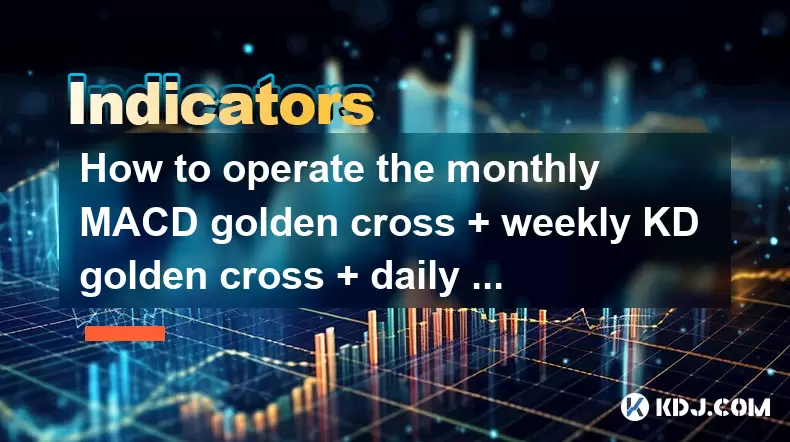
How to operate the monthly MACD golden cross + weekly KD golden cross + daily volume breakthrough?
Jun 15,2025 at 05:36am
Understanding the Strategy: Monthly MACD Golden CrossTo effectively operate the monthly MACD golden cross, traders must first understand what this signal entails. The MACD (Moving Average Convergence Divergence) golden cross occurs when the MACD line crosses above the signal line on a given chart timeframe. When this happens on the monthly chart, it sug...
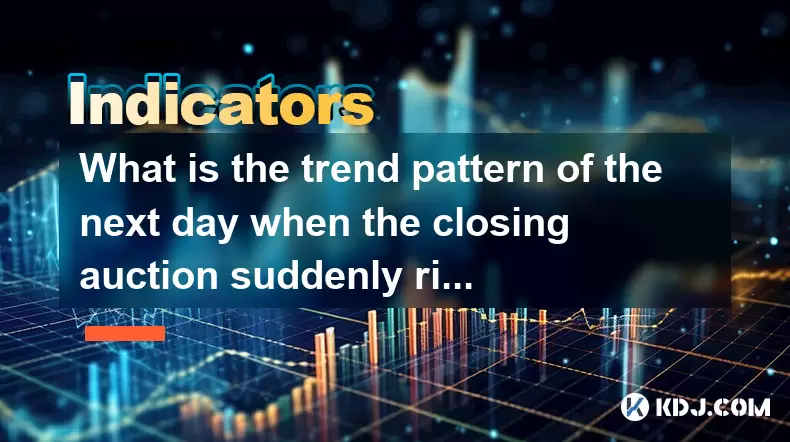
What is the trend pattern of the next day when the closing auction suddenly rises?
Jun 15,2025 at 08:15am
Understanding Closing Auctions in Cryptocurrency MarketsIn the context of cryptocurrency trading, a closing auction refers to a mechanism used by exchanges to determine the closing price of an asset at the end of a trading session. This process typically occurs within a short time window before the market closes for the day and aims to provide a fair an...
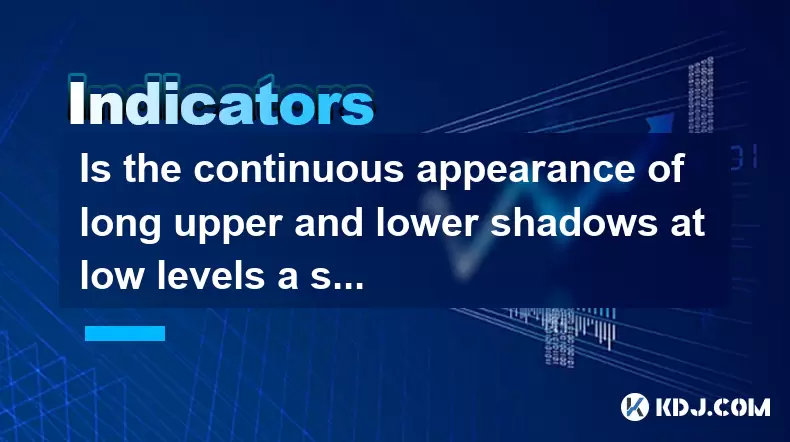
Is the continuous appearance of long upper and lower shadows at low levels a signal of accumulation?
Jun 15,2025 at 01:43am
Understanding Long Upper and Lower Shadows in Candlestick ChartsIn the world of cryptocurrency trading, candlestick patterns are widely used to analyze price movements. A long upper shadow, also known as a wick or tail, indicates that the price rose significantly during the period but was pushed back down by selling pressure. Conversely, a long lower sh...
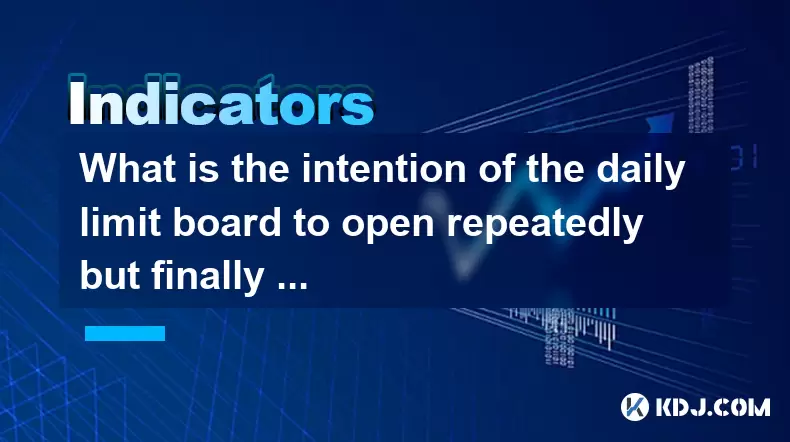
What is the intention of the daily limit board to open repeatedly but finally close?
Jun 15,2025 at 01:08am
Understanding the Daily Limit Board in Cryptocurrency TradingIn cryptocurrency trading, a daily limit board refers to a price movement restriction mechanism applied by certain exchanges or regulatory bodies. This mechanism is primarily used to prevent extreme volatility and panic selling or buying during periods of intense market fluctuation. When an as...

How to calculate the probability of trend continuation after the MACD column divergence?
Jun 14,2025 at 08:01am
Understanding MACD Column DivergenceThe Moving Average Convergence Divergence (MACD) is a widely used technical indicator in cryptocurrency trading. The MACD column, also known as the histogram, represents the difference between the MACD line and the signal line. When price makes a new high or low but the MACD histogram does not confirm this movement, a...
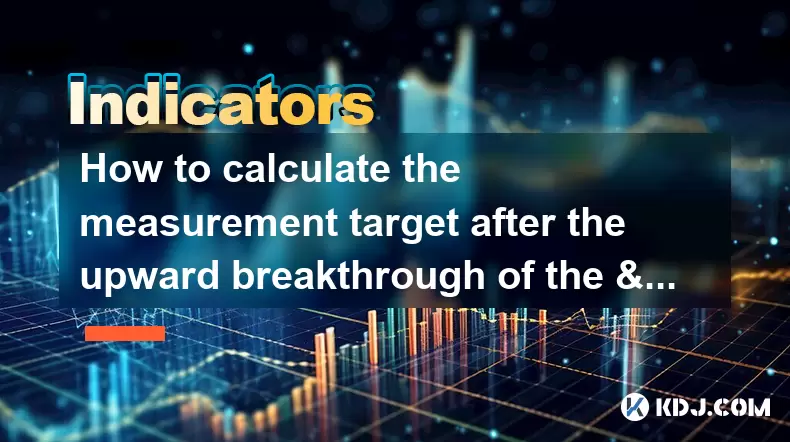
How to calculate the measurement target after the upward breakthrough of the "descending wedge"?
Jun 15,2025 at 05:00am
Understanding the Descending Wedge PatternA descending wedge is a technical analysis pattern typically found in price charts of cryptocurrencies. It is characterized by two converging trendlines: one drawn along a series of lower highs (resistance) and another connecting a series of higher lows (support). This pattern usually indicates a potential bulli...

How to operate the monthly MACD golden cross + weekly KD golden cross + daily volume breakthrough?
Jun 15,2025 at 05:36am
Understanding the Strategy: Monthly MACD Golden CrossTo effectively operate the monthly MACD golden cross, traders must first understand what this signal entails. The MACD (Moving Average Convergence Divergence) golden cross occurs when the MACD line crosses above the signal line on a given chart timeframe. When this happens on the monthly chart, it sug...

What is the trend pattern of the next day when the closing auction suddenly rises?
Jun 15,2025 at 08:15am
Understanding Closing Auctions in Cryptocurrency MarketsIn the context of cryptocurrency trading, a closing auction refers to a mechanism used by exchanges to determine the closing price of an asset at the end of a trading session. This process typically occurs within a short time window before the market closes for the day and aims to provide a fair an...

Is the continuous appearance of long upper and lower shadows at low levels a signal of accumulation?
Jun 15,2025 at 01:43am
Understanding Long Upper and Lower Shadows in Candlestick ChartsIn the world of cryptocurrency trading, candlestick patterns are widely used to analyze price movements. A long upper shadow, also known as a wick or tail, indicates that the price rose significantly during the period but was pushed back down by selling pressure. Conversely, a long lower sh...

What is the intention of the daily limit board to open repeatedly but finally close?
Jun 15,2025 at 01:08am
Understanding the Daily Limit Board in Cryptocurrency TradingIn cryptocurrency trading, a daily limit board refers to a price movement restriction mechanism applied by certain exchanges or regulatory bodies. This mechanism is primarily used to prevent extreme volatility and panic selling or buying during periods of intense market fluctuation. When an as...

How to calculate the probability of trend continuation after the MACD column divergence?
Jun 14,2025 at 08:01am
Understanding MACD Column DivergenceThe Moving Average Convergence Divergence (MACD) is a widely used technical indicator in cryptocurrency trading. The MACD column, also known as the histogram, represents the difference between the MACD line and the signal line. When price makes a new high or low but the MACD histogram does not confirm this movement, a...

How to calculate the measurement target after the upward breakthrough of the "descending wedge"?
Jun 15,2025 at 05:00am
Understanding the Descending Wedge PatternA descending wedge is a technical analysis pattern typically found in price charts of cryptocurrencies. It is characterized by two converging trendlines: one drawn along a series of lower highs (resistance) and another connecting a series of higher lows (support). This pattern usually indicates a potential bulli...
See all articles

























































































